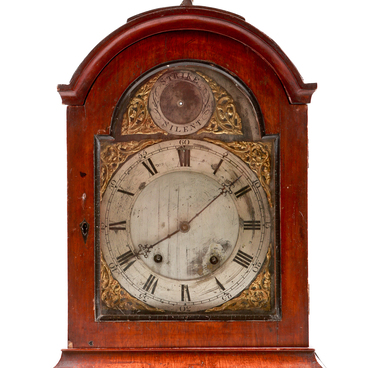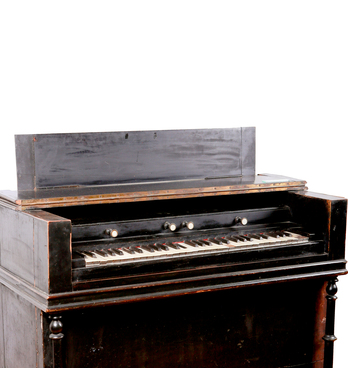The Kasimov Historical and Cultural Museum-Reserve houses porcelain set — a cup and a saucer. They were made in Japan in the 18th century.
The items are decorated with multicolored paintings and gilding: a girl surrounded by a few men is depicted on the saucer and outer sides of the cup. They are wearing traditional Japanese costumes.
There is a relief portrait of a Japanese girl with a traditional high hairstyle on the bottom of the cup — it is visible only in the light. For such an effect craftsmen used lithophane technique — a translucent porcelain plate with relief patterns. Due to the different thickness of the material, the picture is visible only in the light.
Using lithophane on the bottom of the cups was a kind of a brand mark. In the past, famous manufactories that produced porcelain, tried to protect their products from fakes. To do this, they decorated the bottom of the ware with miniature women’s portraits. The portraits were considered to be a quality mark and confirmed the originality of the product.
Before lithophane, wax plates were used, on which artists cut out different pictures. The French craftsmen were the first who came up with the idea to turn the plates into the molds so that to fill them with porcelain mass and bake. In 1827, the technique was patented. And later, the plates were cast from matte glass.
In the mid-19th century, lithophane began to be used in the mass production of tableware. For example, at that time, the royal porcelain manufactory in Berlin produced approximately 140 thousand of items with those pictures and became the largest manufacturer of the products with such decor. As time went on, lithophane was used not only for tableware but lamps, teapot mats and decorative panels as well.
During World War II, tableware with translucent pictures came back into fashion. In Japan, such tea sets and cup and saucer sets were produced mainly for American soldiers as souvenirs. Some of their brand marks have an indication: “Made in occupied Japan”. At the end of 1950s, the production of tableware was almost shut down.
The items are decorated with multicolored paintings and gilding: a girl surrounded by a few men is depicted on the saucer and outer sides of the cup. They are wearing traditional Japanese costumes.
There is a relief portrait of a Japanese girl with a traditional high hairstyle on the bottom of the cup — it is visible only in the light. For such an effect craftsmen used lithophane technique — a translucent porcelain plate with relief patterns. Due to the different thickness of the material, the picture is visible only in the light.
Using lithophane on the bottom of the cups was a kind of a brand mark. In the past, famous manufactories that produced porcelain, tried to protect their products from fakes. To do this, they decorated the bottom of the ware with miniature women’s portraits. The portraits were considered to be a quality mark and confirmed the originality of the product.
Before lithophane, wax plates were used, on which artists cut out different pictures. The French craftsmen were the first who came up with the idea to turn the plates into the molds so that to fill them with porcelain mass and bake. In 1827, the technique was patented. And later, the plates were cast from matte glass.
In the mid-19th century, lithophane began to be used in the mass production of tableware. For example, at that time, the royal porcelain manufactory in Berlin produced approximately 140 thousand of items with those pictures and became the largest manufacturer of the products with such decor. As time went on, lithophane was used not only for tableware but lamps, teapot mats and decorative panels as well.
During World War II, tableware with translucent pictures came back into fashion. In Japan, such tea sets and cup and saucer sets were produced mainly for American soldiers as souvenirs. Some of their brand marks have an indication: “Made in occupied Japan”. At the end of 1950s, the production of tableware was almost shut down.

